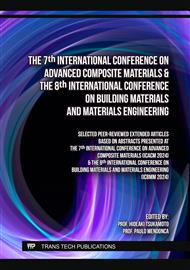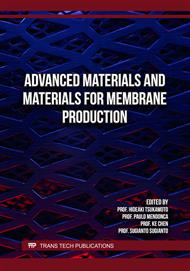p.57
p.67
p.73
p.81
p.87
p.93
p.101
p.111
p.117
Effect of Incorporating Oat Husk Ash on the Compressive Strength of Concrete with Recycled Aggregates
Abstract:
Currently, sustainable concrete alternatives are being sought without compromising the quality and compressive strength of conventional concrete. This article presents the development and results of an experimental study using recycled aggregates from foundations with an fc=280 kg/cm² and a novel additive of natural origin, oat husk ash, aiming to achieve concrete with adequate compressive strength and lower environmental impact. Specifically, the application of this additive as a partial substitute for cement in concretes made with construction and demolition waste (CDW) is analyzed. To determine the influence of this additive on compressive strength, standardized specimens were prepared with two types of concrete: (1) concrete with 30% CDW (C-30%CDW), and (2) concrete with 30% CDW and 5% oat husk ash as a partial substitute for cement (C-30%CDW-5%OHA). Finally, compressive strength tests were conducted at 7, 14, and 28 days on hardened concrete to verify the original hypothesis. The results show that oat husk ash positively influences compressive strength.
Info:
Periodical:
Pages:
117-122
Citation:
Online since:
December 2024
Authors:
Price:
Сopyright:
© 2024 Trans Tech Publications Ltd. All Rights Reserved
Share:
Citation:



